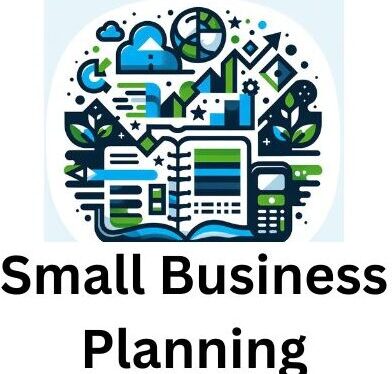
Think of cash flow as the bloodstream of your small business. Just like your body needs a steady circulation of blood, your business requires a consistent flow of cash to keep it alive and kicking. Cash flow, simply put, is the movement of money in and out of your enterprise. It’s a key indicator of financial health, with inflows generally coming from sales to customers, and outflows going to expenses like payroll, rent and supplies.
This isn’t just about accounting for profit; it’s about the availability of cash. A profit represents your earnings after all expenses have been paid, but having cash on hand is what allows you to make timely purchases and investments. In many cases, businesses can be profitable on paper but still struggle due to poor cash flow management. That’s why, in the world of small business, cash really is king.
Keeping a keen eye on your cash flow is imperative not only for maintaining day-to-day operations but also for fueling the growth and expansion of your business. Conversely, one of the most common reasons small businesses face hardship is mismanaging cash flow. Without a buffer or sufficient inflow, things can get tough when large expenses or slow sales periods arise.
Now that you’re clued up on why cash flow is so vital, I’ll walk you through strategies to keep your business’s financial pulse steady. You’re going to find out about the importance of budgeting, how to stay on top of invoicing, and clever ways to accelerate customer payments. Equipped with these strategies, you’ll be much better positioned to take proactive steps towards a flourishing cash flow.
Strategies to Ensure a Positive Cash Flow
Positive cash flow doesn’t happen by accident; it requires a meticulous approach and some savvy strategies. In my opinion, a little effort here can go a long way in keeping your small business robust and ready for growth. Let’s jump into some tactics that can help you maintain that crucial financial health.
Implementing rigorous budgeting and financial forecasting is akin to setting up a GPS for your business finances. You’re going to find out about where your money is coming from, how much is going out, and when. This isn’t just about tracking dollars and cents; it’s also about anticipating future needs and preparing accordingly.
Next up is invoicing. You can’t manage cash flow without money coming in, right? Adopt a proactive invoicing system and follow-up process. That means sending invoices promptly and not being shy to send reminders. Delayed payments are often the result of delayed invoicing. Choose something that resonates with you, whether it’s a cloud-based service or traditional invoicing methods.
Diversity is crucial in payments too. By exploring varied payment options, such as online payments, credit cards, or mobile money solutions, you’re making it effortless for customers to pay you quickly. This strategy I like to leverage; the easier you make it for customers to pay, the faster you’ll see the money in your account.
Finally, don’t forget the power of negotiation. Negotiating better payment terms with suppliers can free up your cash flow significantly. This may mean agreeing on longer payment cycles or bulk purchase discounts. Your first attempt doesn’t need to be your last, so don’t worry too much about perfection when starting these conversations.
Leveraging Technology to Manage Cash Flow
If you want to stay on top of your cash flow, let’s talk about technology. The right tools can transform how you monitor and manage your business’s lifeblood. I’m going to show you the role technology plays in keeping cash flow healthy.
Consider accounting software as your financial command center. This isn’t just about tracking dollars and cents; it’s about visibility. With real-time data, you can make informed decisions that directly affect your cash flow. This means you’re aware, adaptable, and ahead of potential issues.
Automated billing and payment systems are next on the tech lineup. They’re going to streamline your invoicing, ensure consistent billing cycles, and significantly reduce the likelihood of late payments. And let’s not forget about the convenience factor for your customers, which can lead to faster payments.
I want to emphasize how integrating your cash flow management tools can lead to greater efficiency. When your accounting software talks to your billing system and your inventory management system, you get a comprehensive picture of your business’s finances. It’s like having a financial detective working for you, spotting trends and sniffing out issues before they grow into problems.
Technology doesn’t just keep track; it can also forecast. By identifying patterns in your cash flow, these tools can predict future vales and troughs. This foresight is invaluable for planning big expenses, like investing in new equipment or hiring additional staff.
Remember, choosing something that resonates with you and your business needs is crucial. There’s no one-size-fits-all solution, so select the technology that you’ll use effectively and consistently. That’s the strategy I like to leverage for long-term success.
Cultivating Cash Reserves and Dealing With Unexpected Shortfalls
I’m going to let you in on a not-so-secret secret: cash reserves are your business’s safety net. Without them, you’re walking a financial high wire without a net. I want to help you understand why it’s crucial to build that cushion and how it can save you from a lot of headaches down the road.
Let’s talk about how you can start stashing away some of that hard-earned cash into reserves. It’s a straightforward concept, but it does take discipline. Choose a percentage of your profits, however small, and consistently set it aside. Think of it as paying your future business self for the inevitable rainy day.
Now, what if that rainy day comes earlier than expected and your reserves aren’t enough? You’ll want to have a plan for that. There are various financing options like lines of credit, short-term loans, or even invoice financing that can help bridge the gap. Remember, securing these facilities when you don’t yet need them is typically easier, so it’s worth exploring your options in advance.
Lastly, developing a solid game plan for unexpected financial challenges is essential. This isn’t just about having money in the bank; it’s also about knowing your next moves. Work with financial advisors or mentors to create a robust strategy that sees you through tough times without sacrificing the future of your business.
You can always adjust your approach down the road, but starting with these practices will set a strong foundation for good cash flow management. Just don’t focus too much on perfection—start with what you can and grow from there. And remember, I’m here to help you navigate these waters. Now go forth and fortify your financial future!
